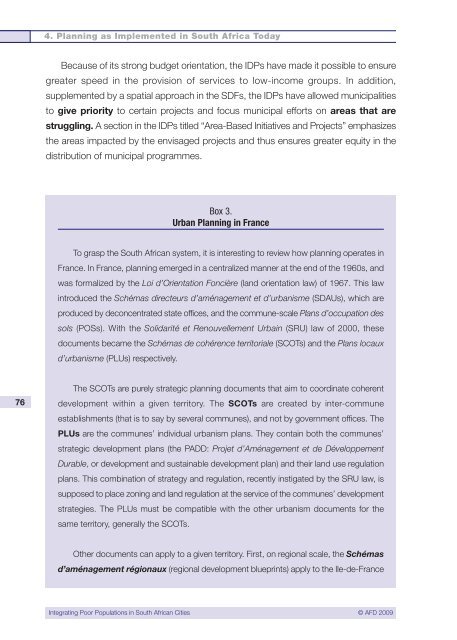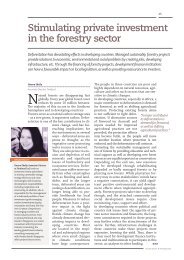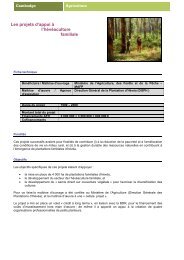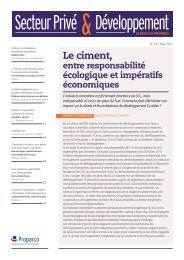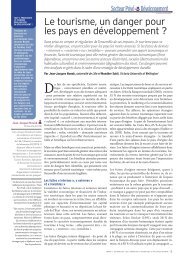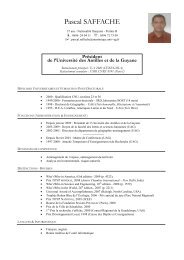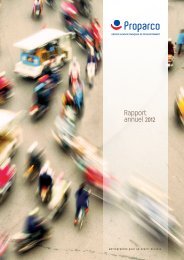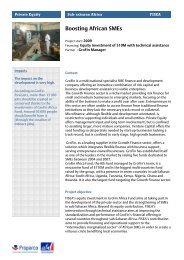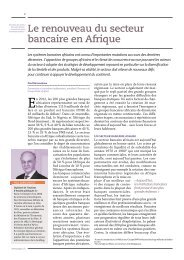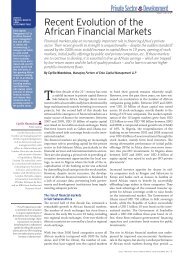Integrating Poor Populations in South African Cities - Agence ...
Integrating Poor Populations in South African Cities - Agence ...
Integrating Poor Populations in South African Cities - Agence ...
You also want an ePaper? Increase the reach of your titles
YUMPU automatically turns print PDFs into web optimized ePapers that Google loves.
4. Plann<strong>in</strong>g as Implemented <strong>in</strong> <strong>South</strong> Africa Today<br />
Because of its strong budget orientation, the IDPs have made it possible to ensure<br />
greater speed <strong>in</strong> the provision of services to low-<strong>in</strong>come groups. In addition,<br />
supplemented by a spatial approach <strong>in</strong> the SDFs, the IDPs have allowed municipalities<br />
to give priority to certa<strong>in</strong> projects and focus municipal efforts on areas that are<br />
struggl<strong>in</strong>g. A section <strong>in</strong> the IDPs titled “Area-Based Initiatives and Projects” emphasizes<br />
the areas impacted by the envisaged projects and thus ensures greater equity <strong>in</strong> the<br />
distribution of municipal programmes.<br />
Box 3.<br />
Urban Plann<strong>in</strong>g <strong>in</strong> France<br />
To grasp the <strong>South</strong> <strong>African</strong> system, it is <strong>in</strong>terest<strong>in</strong>g to review how plann<strong>in</strong>g operates <strong>in</strong><br />
France. In France, plann<strong>in</strong>g emerged <strong>in</strong> a centralized manner at the end of the 1960s, and<br />
was formalized by the Loi d’Orientation Foncière (land orientation law) of 1967. This law<br />
<strong>in</strong>troduced the Schémas directeurs d’aménagement et d’urbanisme (SDAUs), which are<br />
produced by deconcentrated state offices, and the commune-scale Plans d’occupation des<br />
sols (POSs). With the Solidarité et Renouvellement Urba<strong>in</strong> (SRU) law of 2000, these<br />
documents became the Schémas de cohérence territoriale (SCOTs) and the Plans locaux<br />
d’urbanisme (PLUs) respectively.<br />
76<br />
The SCOTs are purely strategic plann<strong>in</strong>g documents that aim to coord<strong>in</strong>ate coherent<br />
development with<strong>in</strong> a given territory. The SCOTs are created by <strong>in</strong>ter-commune<br />
establishments (that is to say by several communes), and not by government offices. The<br />
PLUs are the communes’ <strong>in</strong>dividual urbanism plans. They conta<strong>in</strong> both the communes’<br />
strategic development plans (the PADD: Projet d’Aménagement et de Développement<br />
Durable, or development and susta<strong>in</strong>able development plan) and their land use regulation<br />
plans. This comb<strong>in</strong>ation of strategy and regulation, recently <strong>in</strong>stigated by the SRU law, is<br />
supposed to place zon<strong>in</strong>g and land regulation at the service of the communes’ development<br />
strategies. The PLUs must be compatible with the other urbanism documents for the<br />
same territory, generally the SCOTs.<br />
Other documents can apply to a given territory. First, on regional scale, the Schémas<br />
d’aménagement régionaux (regional development bluepr<strong>in</strong>ts) apply to the Ile-de-France<br />
<strong>Integrat<strong>in</strong>g</strong> <strong>Poor</strong> <strong>Populations</strong> <strong>in</strong> <strong>South</strong> <strong>African</strong> <strong>Cities</strong> © AFD 2009


